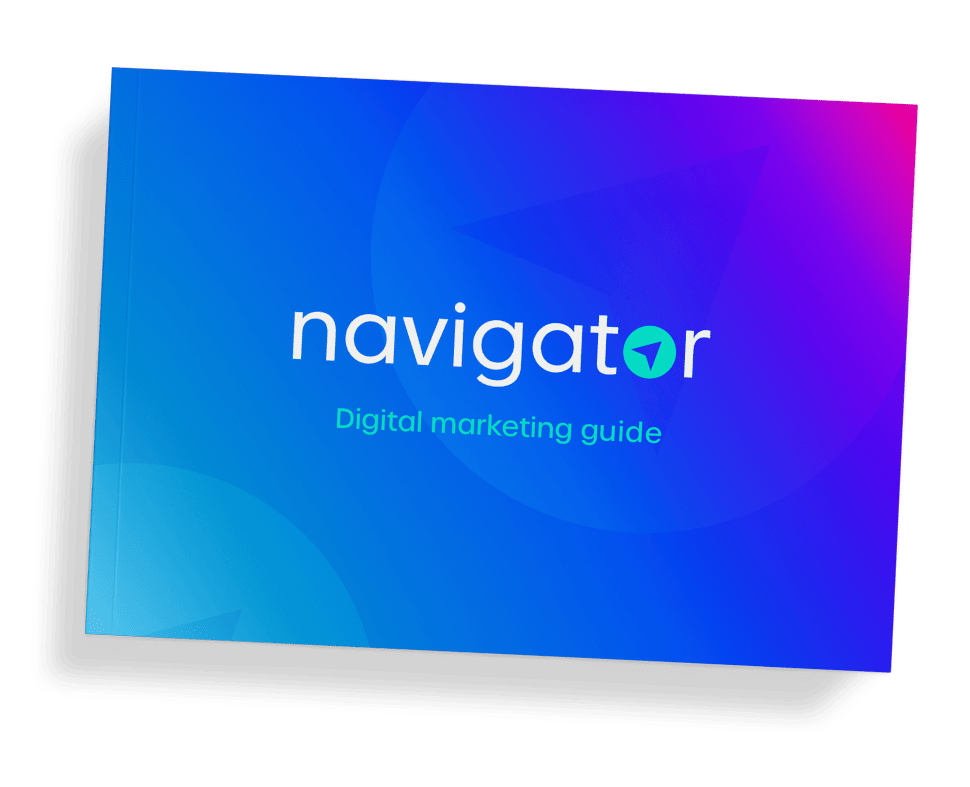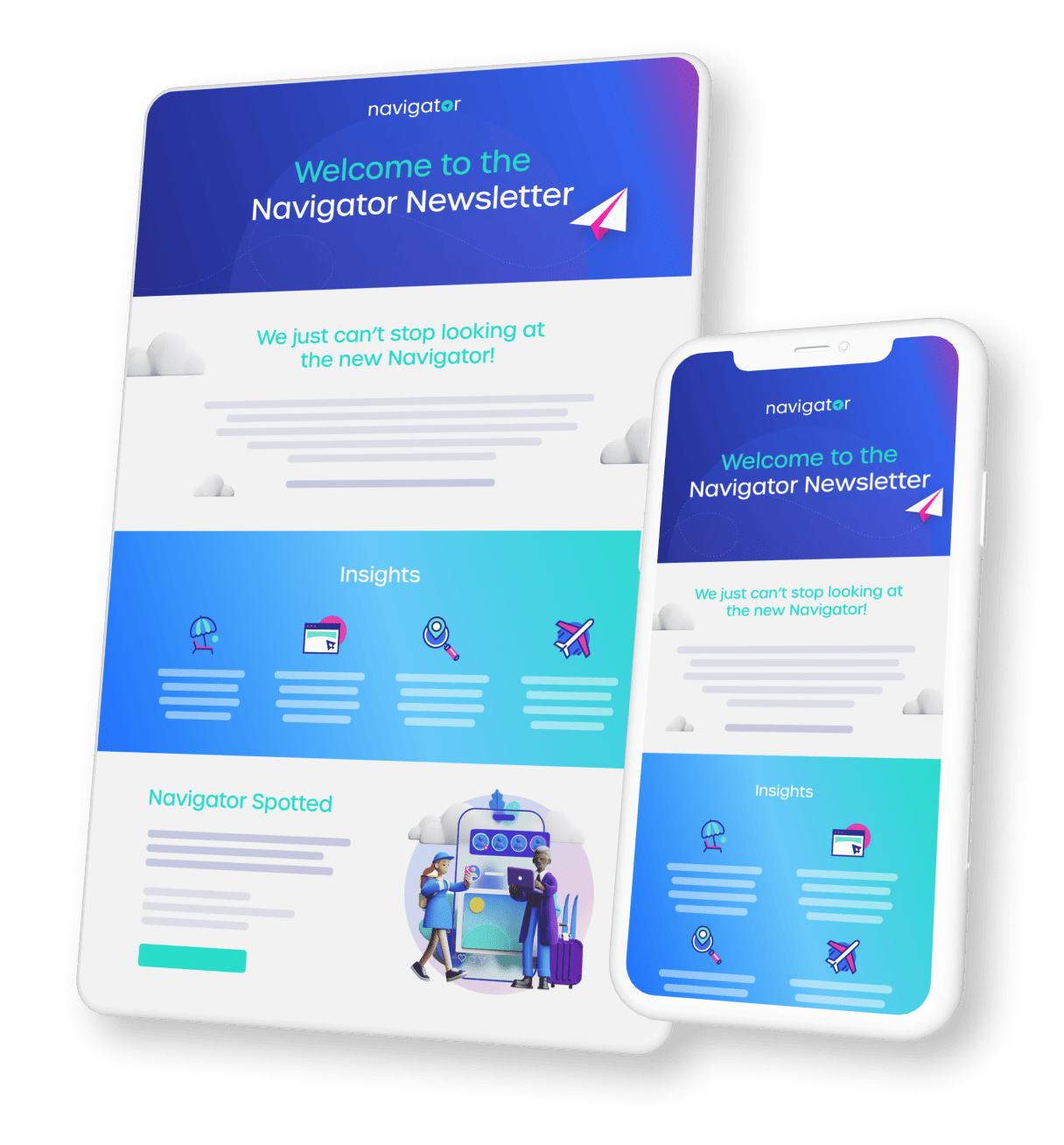12 February 2024
The Best Ad Platform for Travel Marketing
When it comes to travel marketing, everyone wants to know the best ad platforms to reach their ideal customers. But unfortunately, there’s no magic wand to tell you which is the right platform for your brand to be advertising on. That’s because the digital marketing landscape is constantly evolving.
With countless options available, from social media channels like Facebook and Instagram to search engine advertising on Google, selecting the best platform can be a tricky task. Even the most seasoned travel marketers can start to feel like they’re missing out by not being on every platform and utilising every shiny new toy being released.
But not only is this approach to digital marketing exhausting to keep up with, it’s also opening up your brand to the possibility of wasting budget on an audience that doesn’t need what you’re selling.
If you’re feeling burnt out by this ‘do it all’ approach, or want to calm the feeling in the pit of your stomach that there’s a better platform for your brand to advertise on than the one you’ve been using for years, here’s a quick guide to understanding the options to advertise your travel brand in 2024.
I’ve spent years watching how each of these platforms can be used to superchange marketing campaigns in the travel industry. Hopefully by helping you compare their capabilities, I can put your mind at ease, and improve your travel marketing strategy while we’re at it!
What is the best ad platform for my brand?
While it’s tempting to believe that one platform reigns supreme, the reality is that not every platform will be perfect for every business. Remember, each platform has its pros and cons, and each platform will connect you with a different demographic of travellers. So where does your travel brand want to be?
1. Facebook Ads- Meta
- Dynamic Integration: Seamlessly combines Instagram and Facebook through Ads Manager for comprehensive advertising strategies. Make the most of an aesthetically pleasing organic strategy on these brands by integrating with the Ads Manager.
- User-Friendly Interface: Navigate easily, make bulk adjustments, and receive continuous updates for efficient campaign management. Perfect for the new-to-marketing marketer.
- Precise Targeting: Leverage powerful audience targeting capabilities based on demographics and interests for effective reach. Key demographics include older demographics, including seniors and adults, who will have the ability to follow through on purchases.
- Intuitive Ad Creation: Simplifies the process of creating ads, catering to businesses of all sizes with its ease of use.
- Drawbacks: Occasionally experiences site changes without clear communication, leading to user alienation. Review system may cause frustration with its simple rejection process and lengthy waiting periods for feedback. But if you can be patient- it’s worth the payoff to capitalise on your social media resources!
2. TikTok Ads Platform
- New Frontier in Digital Marketing: TikTok’s platform, akin to its social media app, introduces a fresh perspective to digital marketing, revolutionising the way users absorb information. If you have an education aspect to your brand, you couldn’t ask for a better format than a short form video!
- Active User Base: Despite its novelty, TikTok boasts a vast and active and trendy user base, offering significant potential reach for advertisers. If you want to win the hearts of Gen Z (who are currently calling the shots of what’s hot and what’s not for the zeigeist) then you’ll want your brand to meet them here. However the platform is has its sights on increasing its user base to all ages, especially the 30-40 age range.
- Emphasis on Creativity: TikTok promotes creativity, allowing advertisers to experiment with unique and innovative content that resonates with the platform’s dynamic and playful atmosphere. No one will bat an eye at even your most unconventional ideas, it’s a wonderful freedom to inspire your marketing team!
- Engaging Ad Formats: Advertisers can leverage various engaging formats such as In-Feed Ads, Branded Hashtag Challenges, and Branded Effects to create interactive and entertaining content.
- Cost Considerations: Advertising on TikTok can be costly, particularly as its popularity grows, posing a challenge for smaller businesses with limited budgets.
3. Twitter (X)
- Real-Time Engagement: Twitter offers real-time updates, fostering direct interaction with followers and providing visibility through trending topics. If you team thinks in headlines and is more copy focus than aesthetics, this is where they’ll shine.
- Retweet Amplification:Twitter enables the amplification of content through retweets, enhancing reach and engagement. This is great, because it means your audience becomes your promoters by increasing your reach with every retweet.
- Content Saturation: The platform’s fast-paced nature may lead to content saturation, making it difficult to stand out amidst the noise.
4. LinkedIn
- Business Marketing Opportunities: The platform holds significant potential for B2B marketing, allowing businesses to target decision-makers and showcase products or services. If you are trying to appeal to travellers who travel mostly for work- this might be the best place to meet them!
- Thought Leadership: LinkedIn facilitates thought leadership positioning, allowing individuals and companies to establish authority in their respective fields.
- Considerations for B2C: LinkedIn typical has limited organic reach and lower engagement rates for brands, especially for industries not inherently aligned with professional networking. If you’re more interested with building a consumer audience and developing a more personal relationship with them outside of their careers, then you will feel out of place amongst all the business.
5. YouTube
- Video Content Dominance: YouTube reigns as a dominant platform for video content (yes- still more than TikTok or Reels), offering extensive reach and engagement opportunities. They have a wide appeal to all ranges due to the nature of what it offers. Older generations using ‘how to’ videos or even children watching Cartoons.
- Search Engine Ranking: As the second largest search engine, YouTube provides a significant platform for discovery and visibility.
- Diverse Advertising Options: The platform offers diverse advertising options, catering to various marketing objectives and audience segments.
- Competition and Resource Intensity: If you don’t have a dedicated video content team, YouTube won’t be the place to be. Unlike TikToks UGC feel, YouTube audiences expect high quality production, requiring substantial resources for content production and marketing efforts.
6. Google Ads
- Sidebar of Digital Marketing: Positioned alongside social media platforms, Google Ads provides an alternative avenue for digital advertising. If Social Media hasn’t been a fruitful endeavor- you might want to start testing out GDN!
- Usability and Reach: Despite feeling like a veteran in a young industry, Google Ads offers extensive reach and precise targeting capabilities, ensuring access to a wide audience. Powered by the right data, you can make the most of this larger audience with a larger demographic reach than you’ll find on social media alone. Essentially anybody who uses Google is involved in the GDN!
- Challenges in Usability: Users may encounter confusion with the platform’s interface. Crafting campaigns and adverts may lack a seamless flow, leading to uncertainty when editing key aspects. However, with dedication or assistance from marketing experts, leveraging Google Ads can be highly effective, particularly in reaching travelers.
Delivering Marketing Success for your Travel Brand
While there isn’t a one-size-fits-all solution, understanding the key points about each platform can help businesses find their perfect match.
At Navigator, we understand the challenges businesses face in navigating the vast array of marketing channels available today. Our goal is to simplify travel marketing by making sure that you deliver the right message at the right time to your audience during their travel journey. Digital marketing in 2024 can feel overwhelming, but by taking a step back and considering your brand’s resources to produce content and where you want to meet your audience, it will become clear where you need to focus your efforts this year.
You can always use this handy guide as a reminder of important factors such as content type, audience demographics, and engagement dynamics that are crucial to your brand’s success. And we hope you feel empowered to navigate the ever-changing landscape of digital marketing with confidence, knowing that you have the tools to make informed decisions, drive success for your brand, and evolve as fast as the digital marketing landscape itself.
Sources:
The Top 10 Social Media Sites & Platforms (searchenginejournal.com)
https://buffer.com/library/social-media-sites/
https://travelmarketingandmedia.com/
Written by: Adam Michalczyk
from the Navigator Team
Get in touch with Adam today to talk about how Navigator can super-charge your travel marketing ad campaigns.

